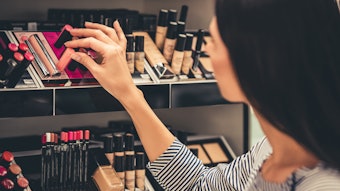
Globally, hair care has been on a trajectory of moderate growth in recent years. Last year saw a slight slowdown, recording year-on-year value growth of 2.9%, and, with a projected CAGR of 1.9% in constant terms over the 2015–2020 period, things looks set to continue in the same steady vein. While the category might not be enjoying the dynamism of other parts of the industry, hair care still has ample opportunities to branch out.
In emerging markets, meanwhile, growth is fueled by economic and political change.
Hair Care as Wellness
Observing that dermocosmetic brands have been gaining popularity, hair care brands are also heightening their remedial claims as consumers take a more holistic approach to their wellbeing, viewing hair as an extension of the skin.
Basic cleansing and scent properties are now expected rather than desired in hair care, and products that assert health benefits, a natural composition or take preventative measures are becoming a priority.
Globally, Shea Moisture was the fastest-growing hair brand last year, with the products utilizing natural ingredients, chiefly plant and food extracts, to target specific hair concerns.
Men’s hair care is forecast to grow at a constant value CAGR of 3.6% in the 2015-2020 period, ahead of the overall growth prospects for hair care.
Likewise, OGX’s model of pure and simple formulations placed it amongst the top five fastest-growth brands (F-1) and saw it garner international attention, eventually being acquired by Johnson & Johnson earlier this year. This appetite for natural formulations in hair care is encouraging, in anticipation of the predicted growth in fermented beauty ingredients.
F-1. Fastest-growing hari care brands, globaly 2014-2015
Schwarzkopf’s Extra Care Purify & Protect anti-pollutant range creates a thin film to protect hair against contaminating agents, while its Essence Ultime Omega Repair Beauty Balm is essentially an anti-ageing BB cream that fights seven signs of hair ageing.
Expanded Hair Care Routines
Inspired by Asian practices, which incorporate a multitude of formats and textures, there remains scope for greater sophistication in hair maintenance to become normalized in the West, for example scalp scalers, essences, serums, rinses, tonics, foams and masks.
Adapting targeted skin care regimen sets and systems to work for the hair, like those by Murad and Skinceuticals, could provide the ideal encouragement for consumers to adopt an extended hair care routine.
Men’s Category Outgrows All
Men’s hair care is forecast to grow at a constant value CAGR of 3.6% in the 2015-2020 period, ahead of the overall growth prospects for hair care. In the West, a progressive culture is playing into this trend, as the stigma of male grooming is being lost and men no longer have to subscribe to a cleanly shaven ideal to be considered smart in the workplace.
This movement is giving men a renewed confidence to experiment and, increasingly, many men simply have more hair to maintain. In the United Kingdom this year, Estée Lauder Companies announced it will be investing in men’s reignited interest in hair care by opening Aveda barber shops in London.
In Saudi Arabia, for example, the category saw strong 24% current value growth last year, albeit from a small base.
In emerging markets, meanwhile, growth is fueled by economic and political change. The prospects are encouraging, particularly for the Middle East and Africa, which is projected to be the most dynamic market for men’s hair care over the next five years. In Saudi Arabia, for example, the category saw strong 24% current value growth last year, albeit from a small base.
The category has reaped the rewards of the “Saudization” of the workforce, a government drive to reduce reliance on expatriates, which has sent local men into white collar jobs in droves, with a newfound need to groom.










